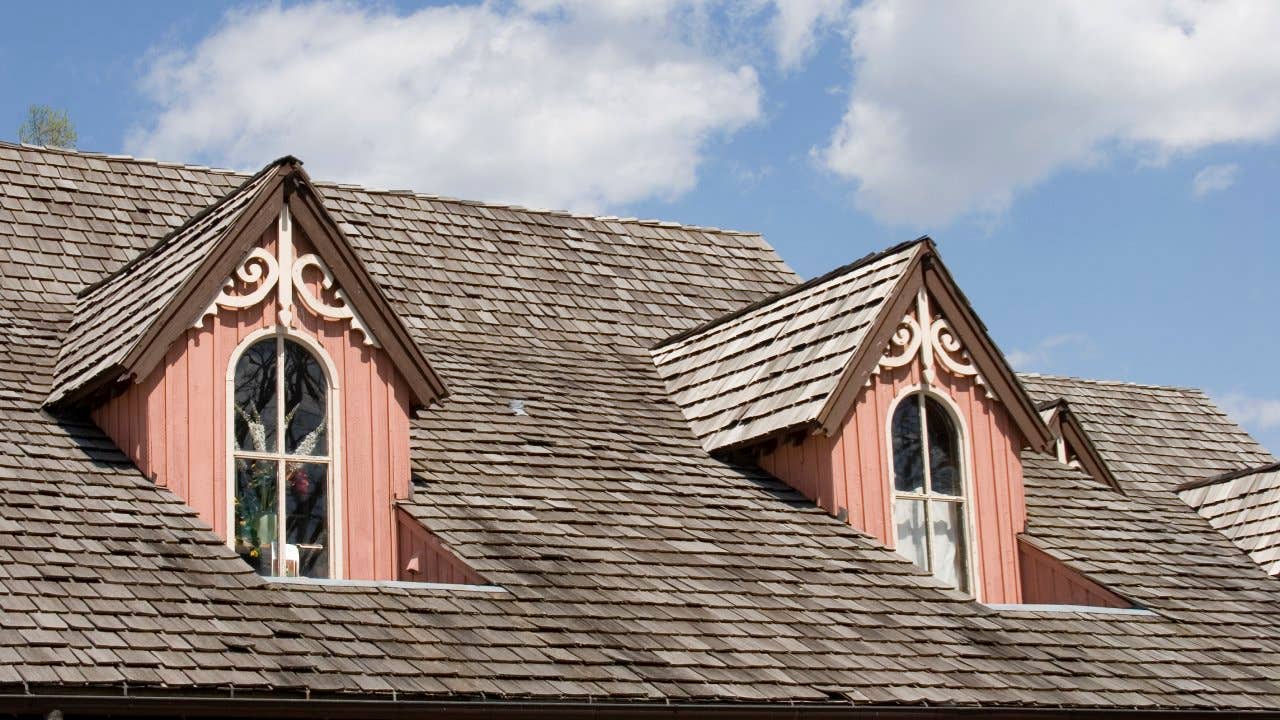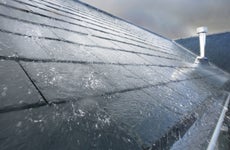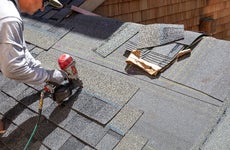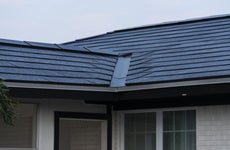What’s the best type of roof material?

The Bankrate promise
At Bankrate we strive to help you make smarter financial decisions. While we adhere to strict , this post may contain references to products from our partners. Here's an explanation for .
When it comes to the roof of their house, every homeowner wants the same things. They want their new roof to withstand the elements, last the longest, provide the best value for money — oh, and looking nice wouldn’t hurt, either. But while the aims are the same, there are a lot of different roofing materials available, from time-honored slate to new fangled solar.
Every material has its benefits and downsides, and depending on the size, style and location of your house, one option may be better than the others. Here’s a guide to the most common roofing materials — and what to consider, whether you’re installing a new roof or replacing an old one.
What are the different types of roofs?
The following are some of the most common materials for roofs. Generally, when we talk about roof type, we’re referring to the material that comprises its covering, which actually consists of individual pieces called shingles, tiles or panels.
Asphalt
Because of their affordability, ease of installation, and effectiveness, asphalt shingles are the most common roofing material in the U.S. They are lightweight, can be cut to fit any type of roof, and don’t require any special tools for installation. Generally, asphalt tends to perform better in temperate climates and can crack in extreme temperatures. Because it is light, asphalt is also more prone to damage and wind uplift. As a result, asphalt shingles don’t last as long as some other roof materials.
Clay
Clay is one of the oldest roofing materials — tiles can even be found on buildings that are thousands of years old. Clay tiles are weather-resistant and low-maintenance, providing excellent insulation to regulate the temperature inside the house. But all these advantages make clay tiles significantly more expensive than asphalt, and since they are heavy, certain houses might need additional framing to support the weight of a clay-tile roof.
Concrete
Cost-effective, durable, and easily customizable, concrete tiles are a popular alternative to clay. They are installed and function similarly: Concrete is tough enough to survive the elements, requires little maintenance, and can last for several generations. However, like clay, concrete is heavy and some roofs might need to be reinforced if you’re switching to it from a lighter material. Also, concrete can get brittle, cracking under impact in extreme cold. (The same problem afflicts concrete driveways).
Metal
Another roof with a long lifespan is metal. Be it steel, aluminum, or copper, metal roofs are durable, energy-efficient, eco-friendly, and stylish enough to add to the curb appeal of the house. They are sturdy enough to resist heavy rain, snow, and winds, do not crack in extreme heat, and can even be installed over an existing roof. But metal roofs are not without their downsides.They are noisy, can become dented under impact, and they are also several times pricier than asphalt.
Slate
One of the most aesthetically pleasing roofs is slate. Because of its clean lines and classic look, slate has been a popular roof choice with homeowners and architects down the ages. If you live in extreme climes plagued by high winds, storms, and hail, slate is a strong, durable roof to resist the elements and last 100 years or longer. It is also a naturally occurring material, and therefore, eco-friendly. The downsides? Slate is costlier to manufacture as well as to install. Slate also makes a heavy roof, with a single square weighing (100 square feet) 800 pounds or more, and will put a significant load on the structure of the house.
Solar tiles
You’ve heard of solar panels — but how about an entire solar roof? An up-and-coming technology, solar tiles or shingles can be integrated into an existing roof and combine style, efficiency, and energy savings. Solar tiles are impact- and fire-resistant, come in different shapes, provide UV protection, and can lend a unique look to your house. However, because solar tiles are such a new invention, their longevity still remains to be seen. They may also be hard to find in some places. And innovative technology often goes hand in hand with higher costs: Don’t be surprised if you are required to spend $1,000 or more per square.
Wood
As with flooring, wood always has a classic and classy look, especially with a home in any historic style. Redwood, cedar and pine are the most common types. They can be stained any color, but also age beautifully — at least, in terms of appearance. In terms of durability, wood can be trickier: It doesn’t perform well in perpetually damp climates and, while it can be long-lasting in dry weather, it is highly flammable if not treated. Given its limitations and high maintenance, a wood roof is expensive, especially if you opt for thicker shakes over shingles.
What do different roofs cost?
Roofs are priced per square foot, with numbers often quoted per roofing square. Other factors to include in the total cost are labor charges, style and size of the house, location, permits and licenses, accessibility to the roof, and structural issues.
Roof prices and lifespans
| Material | Cost (per roofing square) | Lifespan (years) |
|---|---|---|
| Source: HomeAdvisor | ||
| Asphalt | $100 – $150 | 15 – 30 |
| Clay | $800 – $1,800 | 75 – 100 |
| Concrete | $150 – $250 | 30 – 50 |
| Metal | $120 – $900 | 50+ |
| Slate | $800 – $1,800 | 125 – 200 |
| Solar | $1,100 – $2,600 | 40 (estimated) |
| Wood | $250 – $600 | 15 – 30 |
Choosing the best roof
Aside from the cost and lifespan, what other considerations should you take when deciding on the best roof for your home?
If the material is heavy, like concrete or slate, the roof may require special framing to support the weight. That can be a complicated business if you want to replace an old roof made of lighter stuff with a heavier one.
Another vital factor to consider: the local weather. If you live in a certain type climate, the roof must be able to withstand its characteristic heat or cold or elements. Let history be your guide: There’s a reason clay roofs have been traditional in hot southern regions, for example. Check if there are the fire codes in your region and if the chosen material adheres to them. Wood may be forbidden in fire-prone zones.
Aesthetics are also important, and if you want the roof to complement the rest of the house, it needs to be available in different colors. But you also need to decide how important authenticity is to you, if you have a historic home or one in a certain style.
And finally, there’s ongoing or future expenses. Some roofs, such as metal, do require specialized labor to repair. Often, though, the types that require more outlay up front last the longest, and have fewer maintenance costs.
Related Articles



